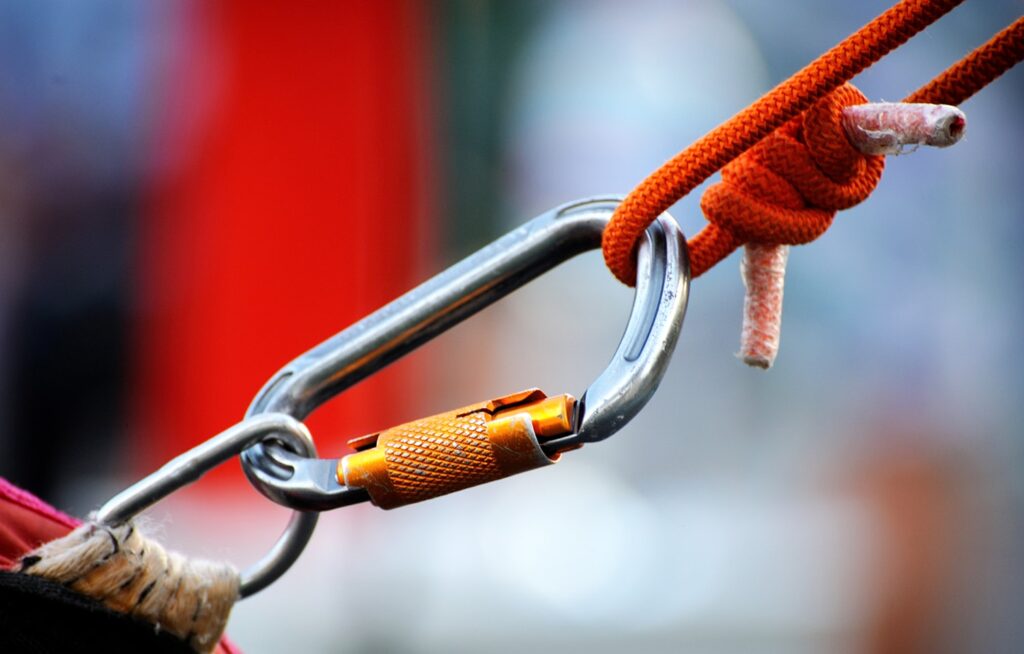Carabiners are small but vital pieces of gear that ensure safety in climbing, rescue work, and outdoor activities. Regular inspection and maintenance are crucial to keep them reliable. Neglecting this task can increase risks, especially in situations where strength and performance matter most. This guide explains how to check, clean, and store your gear for long-lasting use.
Why Inspection Matters
Carabiners are designed to handle significant weight and stress, but even high-quality equipment can wear down. Dirt, corrosion, or cracks may compromise performance. Frequent inspection ensures problems are caught early, reducing the risk of accidents.
Step 1: Check for Structural Damage
A close look at the surface reveals the first signs of wear. Here’s what to check:
- Look for deep grooves, cracks, or sharp edges.
- Inspect the gate and hinge areas carefully.
- Retire the gear if you find burrs or deformation.
Spotting these signs early prevents unsafe use and ensures the equipment remains dependable.
Step 2: Test the Gate Function
The gate must move smoothly for reliable use. Pay attention to these points:
- Open and close the gate several times.
- Check that it snaps shut firmly.
- Replace gear if the spring feels weak or motion sticks.
Testing the gate regularly ensures the mechanism works as intended under load.
Step 3: Inspect the Locking Mechanism
Locking systems play a crucial role in safety. Keep these checks in mind:
- Twist or slide the lock to confirm smooth movement.
- Look for dirt or grit blocking the mechanism.
- Ensure the lock holds securely once engaged.
A lock that jams or fails to secure the gate is unsafe, no matter how strong the rest looks.
Step 4: Clean Properly
Clean gear performs better and lasts longer. Follow these steps:
- Rinse with warm water to remove dirt.
- Use a soft brush for stubborn debris.
- Avoid harsh chemicals that weaken metal.
- Apply a drop of silicone-based lubricant if the gate sticks.
Consistent cleaning reduces wear and ensures smooth operation every time.
Step 5: Store Correctly
How you store your equipment matters. Use these storage tips:
- Keep gear in a cool, dry place.
- Avoid direct sunlight and chemical exposure.
- Separate from sharp tools that can scratch.
- Use a pouch or organizer for protection.
Safe storage extends the life of your equipment and prevents unnecessary damage.
Step 6: Replace When Needed
Even strong equipment has a limit. Replace your gear if:
- It has suffered a heavy impact.
- You notice severe wear or cracks.
- The gate or lock no longer functions properly.
Investing in new Carabiners when needed ensures your safety is never compromised.
Practical Maintenance Habits
Good habits make inspection and care easier. Here’s a simple routine:
- Do a quick check after each trip.
- Clean and inspect more thoroughly once a month.
- Adjust the routine if you climb often or in harsh conditions.
These habits help you trust your gear and reduce the chance of failure.
Safety and Ecommerce Considerations
Today, many climbers and outdoor enthusiasts rely on carabiners purchased online. Ecommerce platforms make it easy to compare brands, but users must take responsibility for inspection and upkeep. Always check products upon arrival and confirm authenticity.
Conclusion
Inspecting and maintaining your gear is not optional; it is essential. A few minutes spent checking, cleaning, and storing can prevent accidents and extend the life of your equipment. Consistent care helps you climb, work, or rescue with confidence, knowing your tools are dependable.



